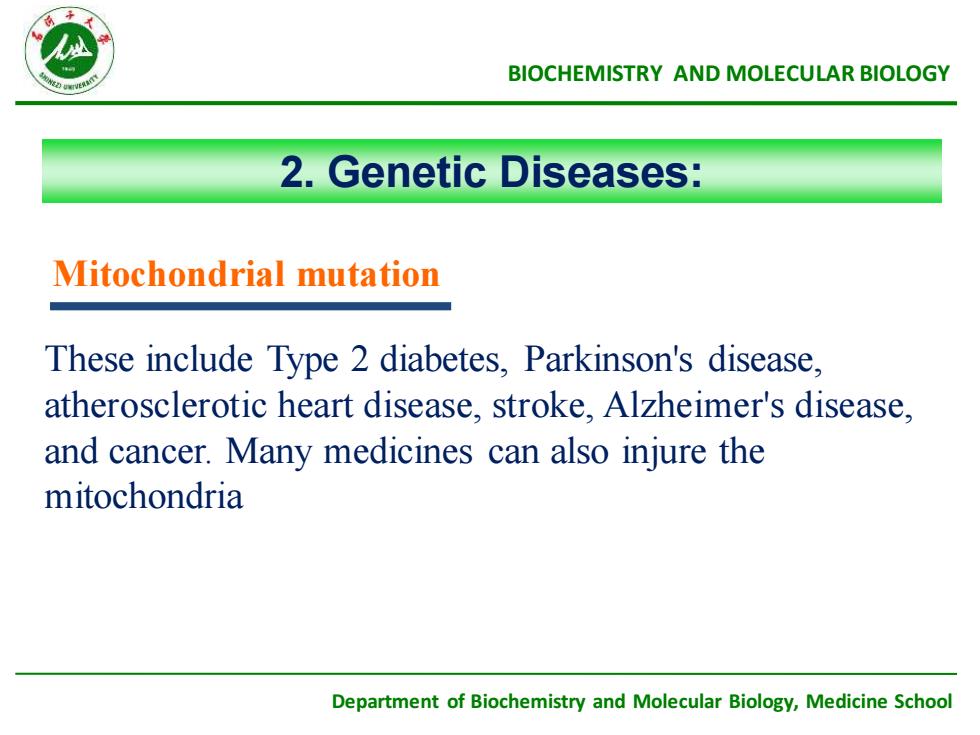
BIOCHEMISTRYANDMOLECULARBIOLOGY2.GeneticDiseases:MitochondrialmutationThese include Type 2 diabetes, Parkinson's diseaseatheroscleroticheart disease,stroke,Alzheimer's disease.and cancer. Many medicines can also injure themitochondriaDepartment of Biochemistry and Molecular Biology,Medicine School
Department of Biochemistry and Molecular Biology, Medicine School BIOCHEMISTRY AND MOLECULAR BIOLOGY 2. Genetic Diseases: These include Type 2 diabetes, Parkinson's disease, atherosclerotic heart disease, stroke, Alzheimer's disease, and cancer. Many medicines can also injure the mitochondria Mitochondrial mutation
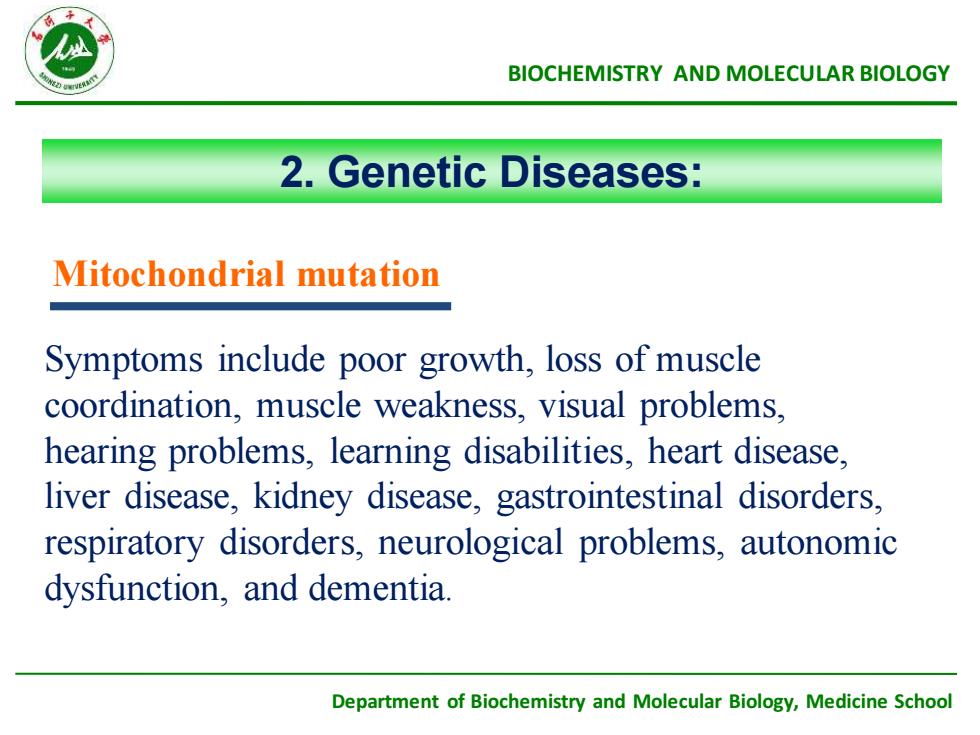
BIOCHEMISTRYANDMOLECULARBIOLOGY2.GeneticDiseases:MitochondrialmutationSymptoms include poor growth, loss of musclecoordination,muscleweakness,visualproblemshearing problems, learning disabilities, heart disease.liver disease, kidney disease, gastrointestinal disorders,respiratory disorders,neurological problems,autonomicdysfunction,anddementiaDepartment of Biochemistry and Molecular Biology,Medicine School
Department of Biochemistry and Molecular Biology, Medicine School BIOCHEMISTRY AND MOLECULAR BIOLOGY 2. Genetic Diseases: Symptoms include poor growth, loss of muscle coordination, muscle weakness, visual problems, hearing problems, learning disabilities, heart disease, liver disease, kidney disease, gastrointestinal disorders, respiratory disorders, neurological problems, autonomic dysfunction, and dementia. Mitochondrial mutation
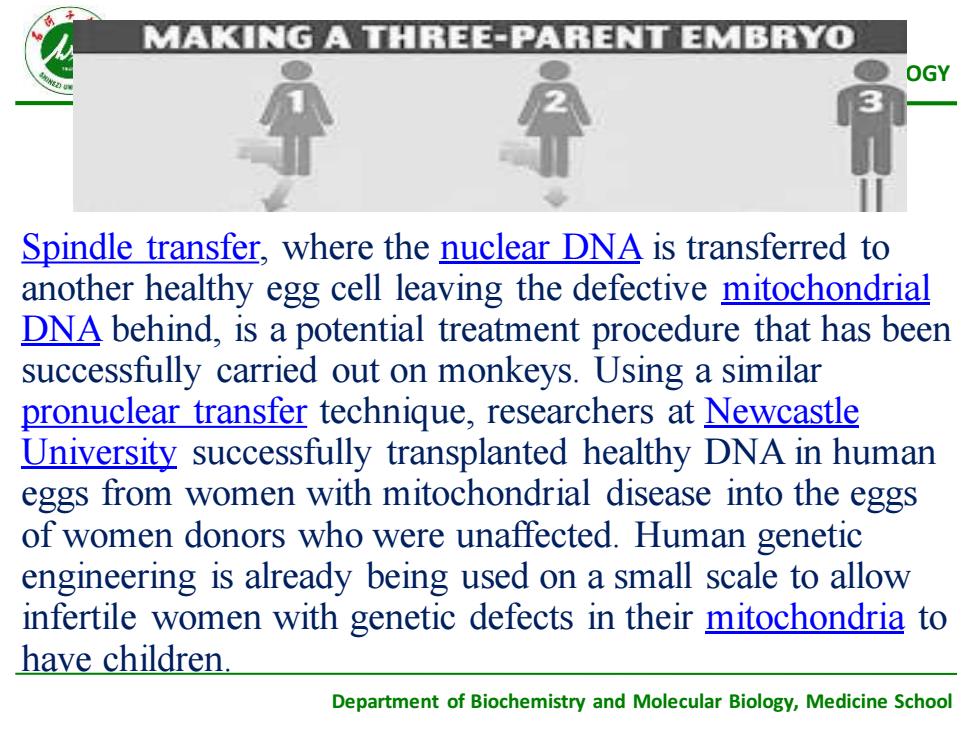
MAKNGATHREE-PARENTEMBRYOOGY-Spindle transfer, where the nuclear DNA is transferred toanother healthy egg cell leaving the defective mitochondrialDNA behind, is a potential treatment procedure that has beensuccessfully carried out on monkeys. Using a similarpronuclear transfer technique, researchers at NewcastleUniversity successfully transplanted healthyDNAinhumaneggs from women with mitochondrial disease into the eggsof women donors who were unaffected. Human geneticengineering is already being used on a small scale to allowinfertile women with genetic defects in their mitochondria tohavechildrenDepartment of Biochemistry and Molecular Biology,Medicine School
Department of Biochemistry and Molecular Biology, Medicine School BIOCHEMISTRY AND MOLECULAR BIOLOGY Spindle transfer, where the nuclear DNA is transferred to another healthy egg cell leaving the defective mitochondrial DNA behind, is a potential treatment procedure that has been successfully carried out on monkeys. Using a similar pronuclear transfer technique, researchers at Newcastle University successfully transplanted healthy DNA in human eggs from women with mitochondrial disease into the eggs of women donors who were unaffected. Human genetic engineering is already being used on a small scale to allow infertile women with genetic defects in their mitochondria to have children
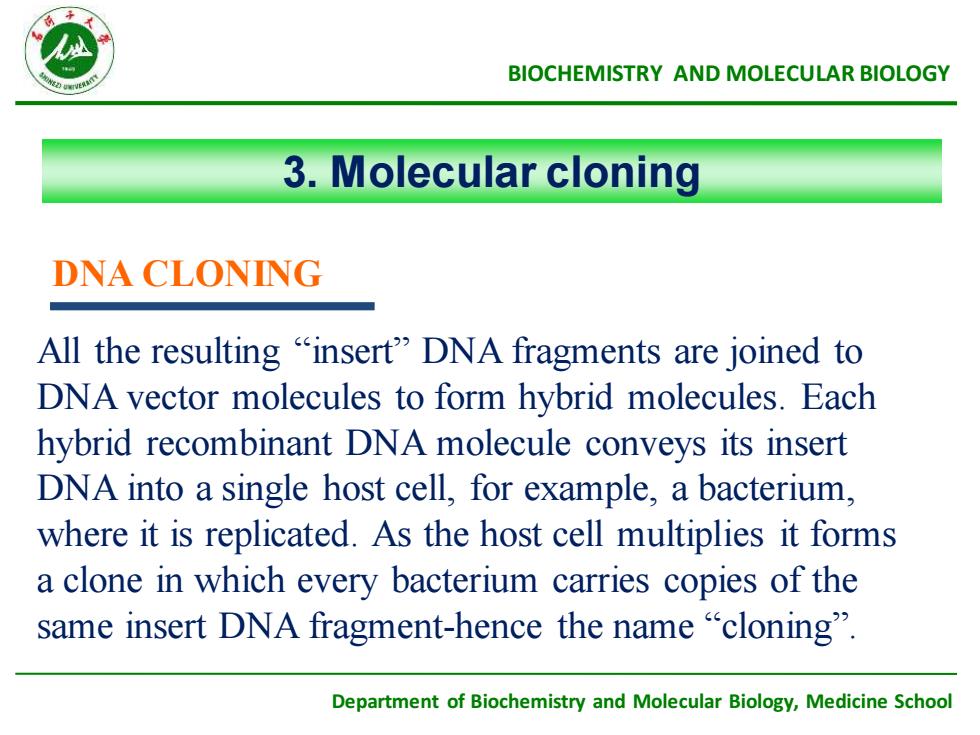
BIOCHEMISTRYANDMOLECULARBIOLOGY3.MolecularcloningDNA CLONINGAll the resulting insert" DNA fragments are joined toDNA vector molecules to form hybrid molecules. Eachhybrid recombinant DNA molecule conveys its insertDNA into a single host cell, for example, a bacterium.where it is replicated. As the host cell multiplies it formsaclone inwhich everybacterium carries copies ofthesame insert DNA fragment-hence the name “cloning"Department of Biochemistry and Molecular Biology,Medicine School
Department of Biochemistry and Molecular Biology, Medicine School BIOCHEMISTRY AND MOLECULAR BIOLOGY 3. Molecular cloning All the resulting “insert” DNA fragments are joined to DNA vector molecules to form hybrid molecules. Each hybrid recombinant DNA molecule conveys its insert DNA into a single host cell, for example, a bacterium, where it is replicated. As the host cell multiplies it forms a clone in which every bacterium carries copies of the same insert DNA fragment-hence the name “cloning”. DNA CLONING
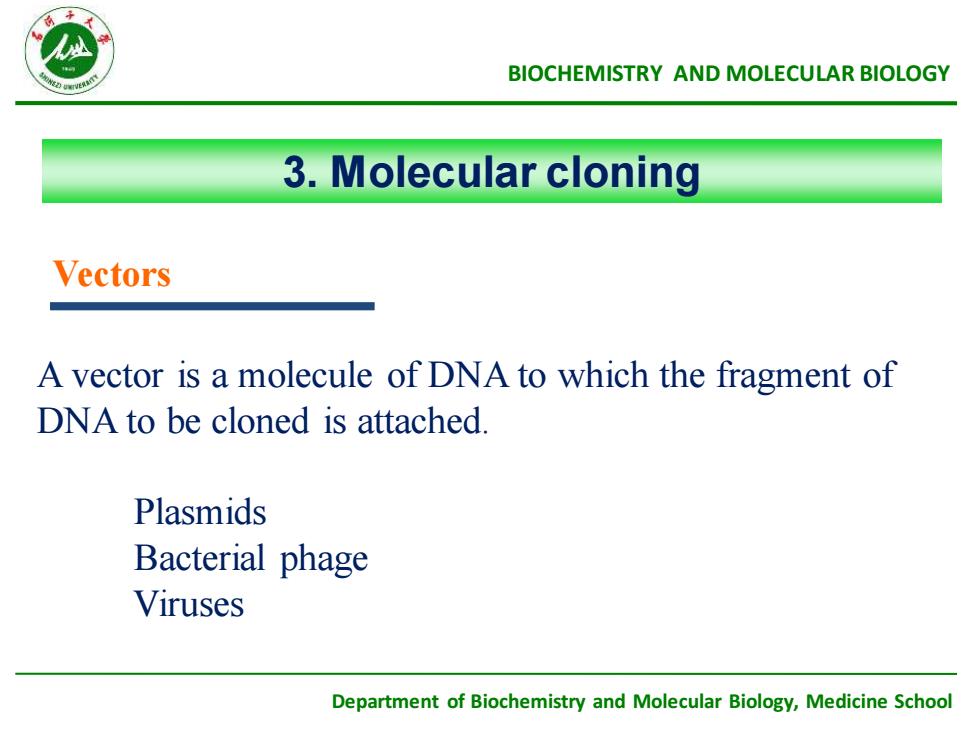
ABIOCHEMISTRYANDMOLECULARBIOLOGY3.Molecular cloningVectorsA vector is a molecule of DNA to which the fragment ofDNAto be cloned is attachedPlasmidsBacterial phageVirusesDepartment of Biochemistry and Molecular Biology,Medicine School
Department of Biochemistry and Molecular Biology, Medicine School BIOCHEMISTRY AND MOLECULAR BIOLOGY 3. Molecular cloning A vector is a molecule of DNA to which the fragment of DNA to be cloned is attached. Plasmids Bacterial phage Viruses Vectors